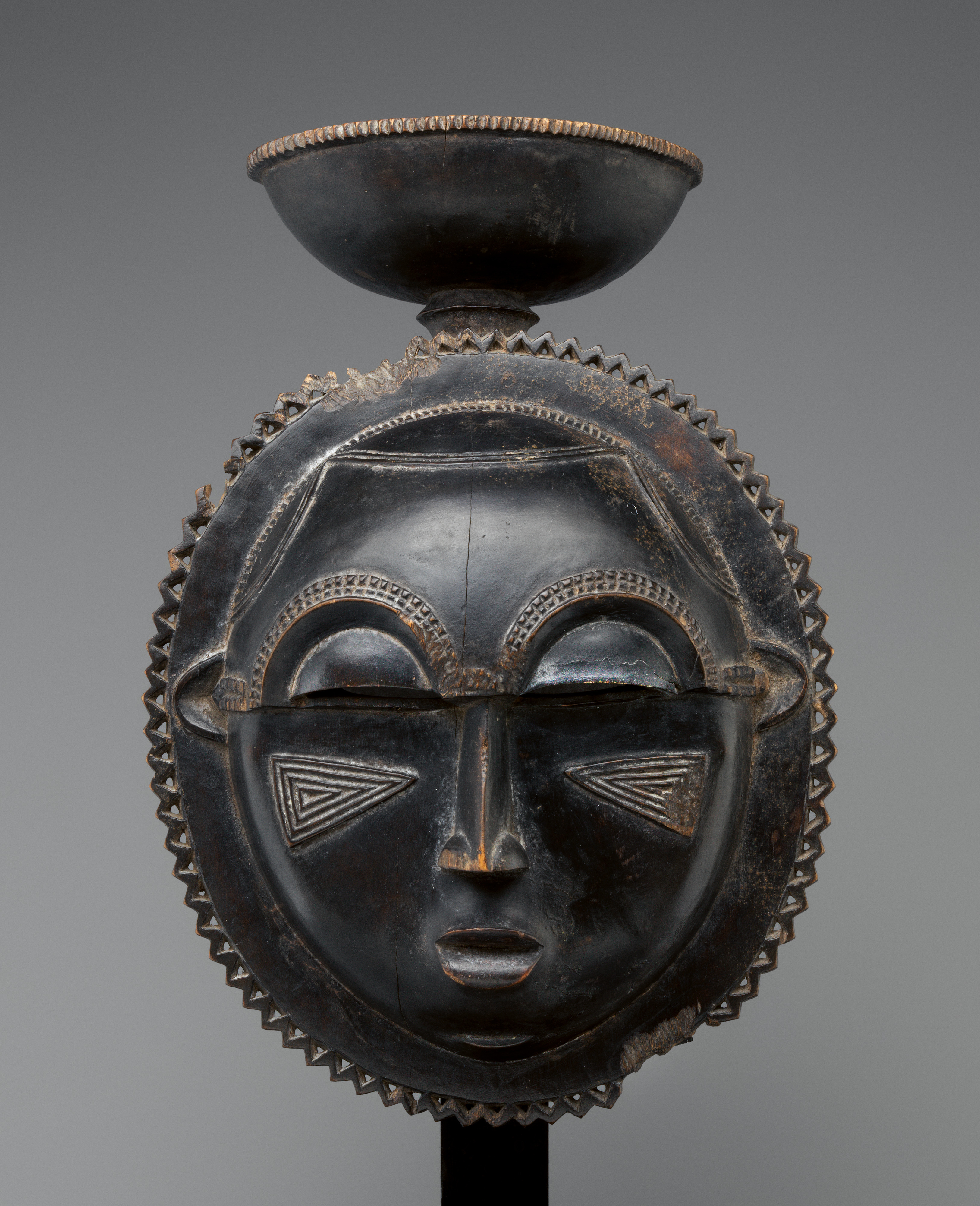Moon Mask
Not on view
This Baule mask features a perfectly round, domed face framed by a flat rim bordered with a pierced serrated decoration, echoing the zigzag border of a cup delicately balanced at the summit. The crescent eyes, slender nose, naturalistic mouth, and a panel of concentric triangles carved in relief on each cheek contribute to the refined composition. The mask’s surface has a dark, glossy patina.
Among the Baule peoples of Central Côte d'Ivoire, masks are divided into three distinct groups: first, the most widespread, the goli mask; then the sacred masks, bonu amuin, reserved for adult males only; and finally, entertainment masks. Moon masks such as this example fall in the last category.
Together with other representations of natural phenomena such as a rainbow and the setting sun, the masks are worn to “warm the dance space” at the beginning of a sequence known as gbagba or mblo. Appearing during daytime and open to all, gbagba performances feature masked dancers who impersonate familiar subjects such as spirits of nature, animals, and human caricatures. The Baule master carver who modelled this mask has depicted in a smooth, poised style a face in a perfect circle, echoed by the semi-circles of the eyes and eyebrows and reinforced by the pierced serrated decoration of the circular border.
Due to rights restrictions, this image cannot be enlarged, viewed at full screen, or downloaded.
This artwork is meant to be viewed from right to left. Scroll left to view more.






